Fiona Varian Equine Gallery
Conformation or Posture??
Many of the following horses are taken before and after one session only
ALL PHOTOGRAPHS AND VIDEOS ON THIS SITE ARE WITH THE EXPRESS PERMISSION OF THE INDIVIDUALS CONCERNED AND ARE NOT TO BE COPIED OR USED IN ANY OTHER FORMAT. NO PHOTOGRAPH OR VIDEO OF ANY SESSION IS EVER TAKEN OR SHOWN WITHOUT EXPRESS PERMISSION.
ANNIE:
Asymmetric pelvis compromised by previously sore hind gut. The below pictures are taken before and after one session. Sadly, this beautiful horse is no longer with us.
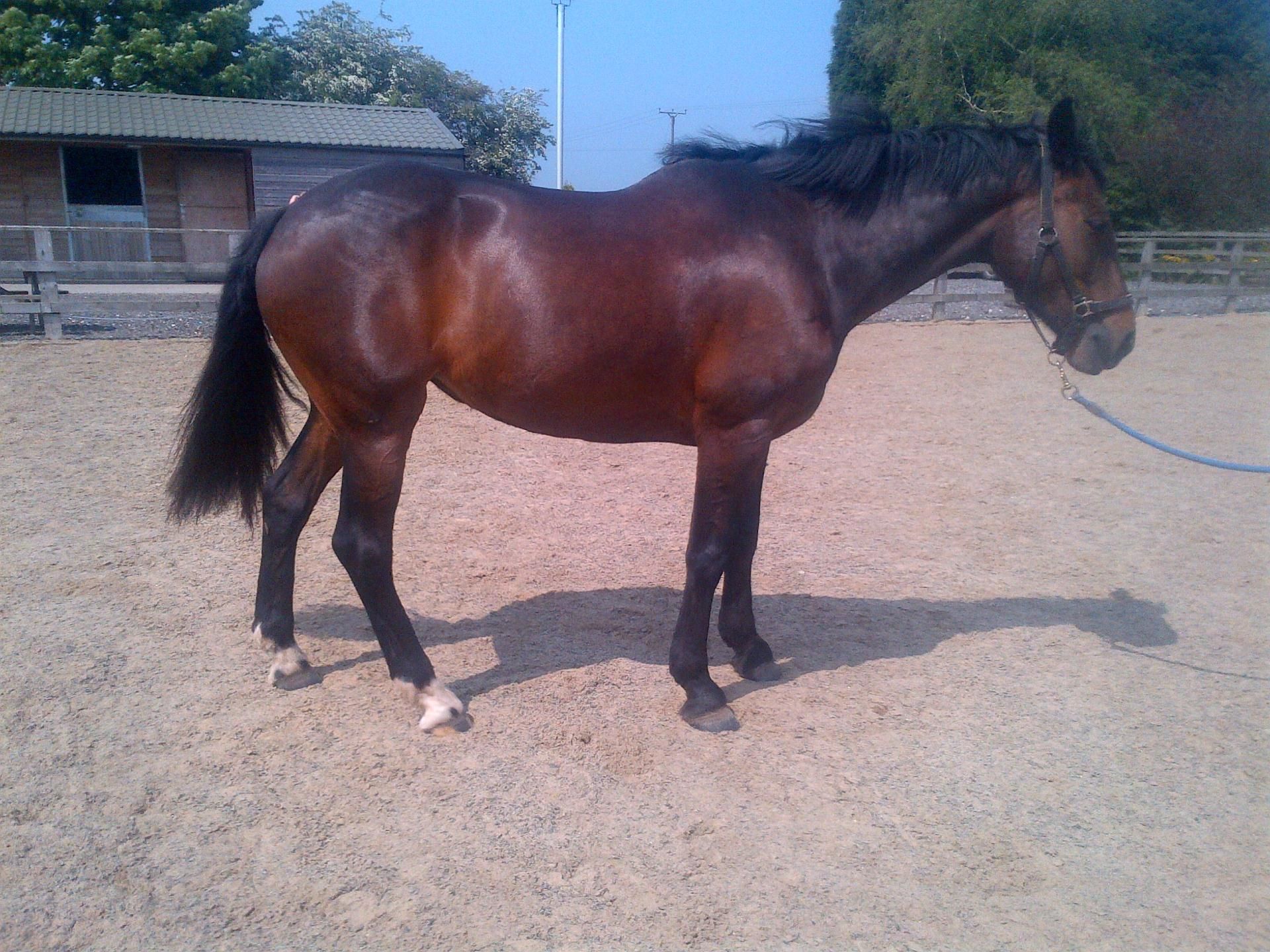
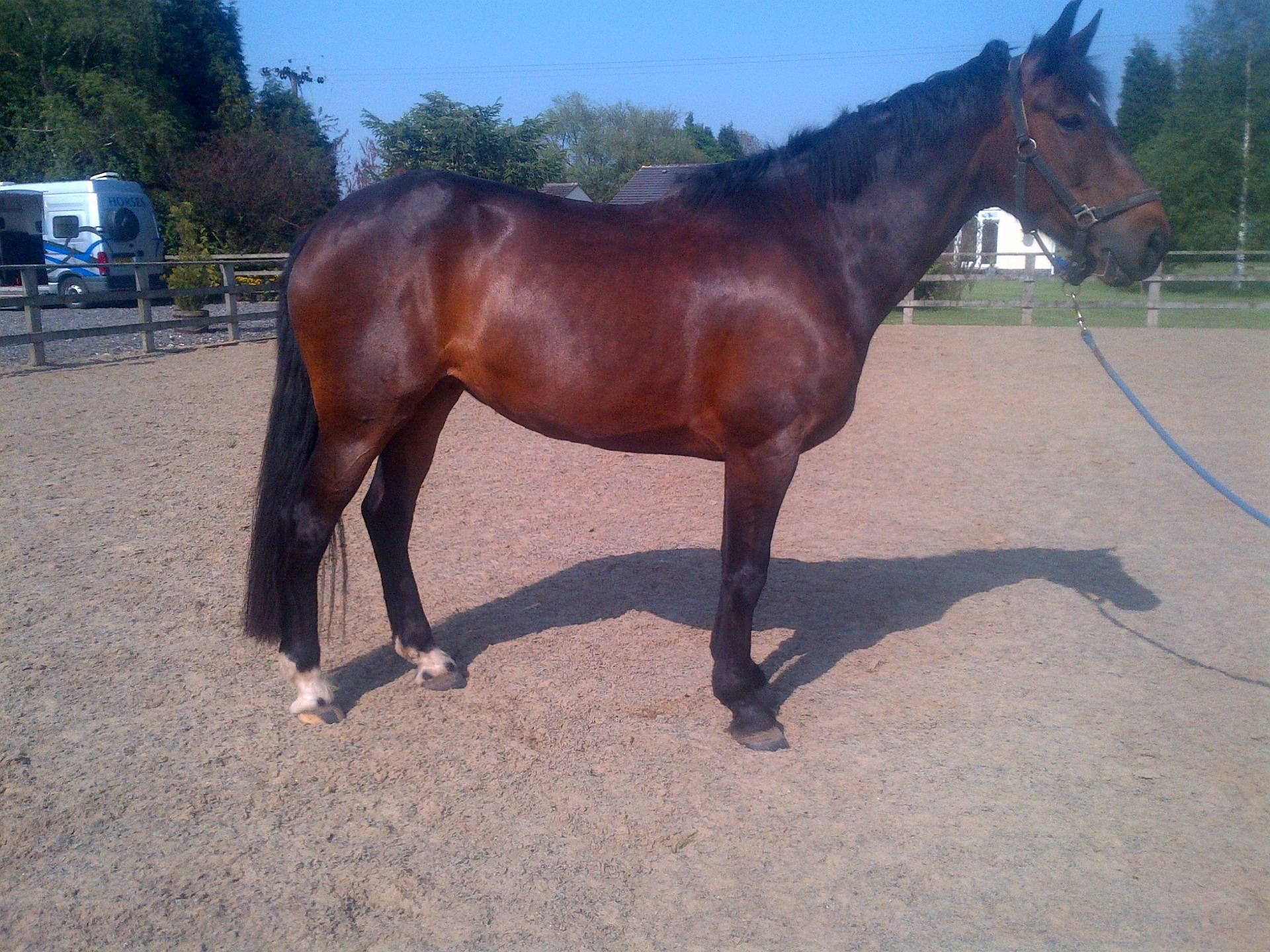
KEZ Before and after first session:
Kez is compromised by intraspinous ligament damage; Asymmetric shoulder muscle development/use; Asymmetric pelvic use; Cranial compression. Below postural and gait pictures are the result of one session.
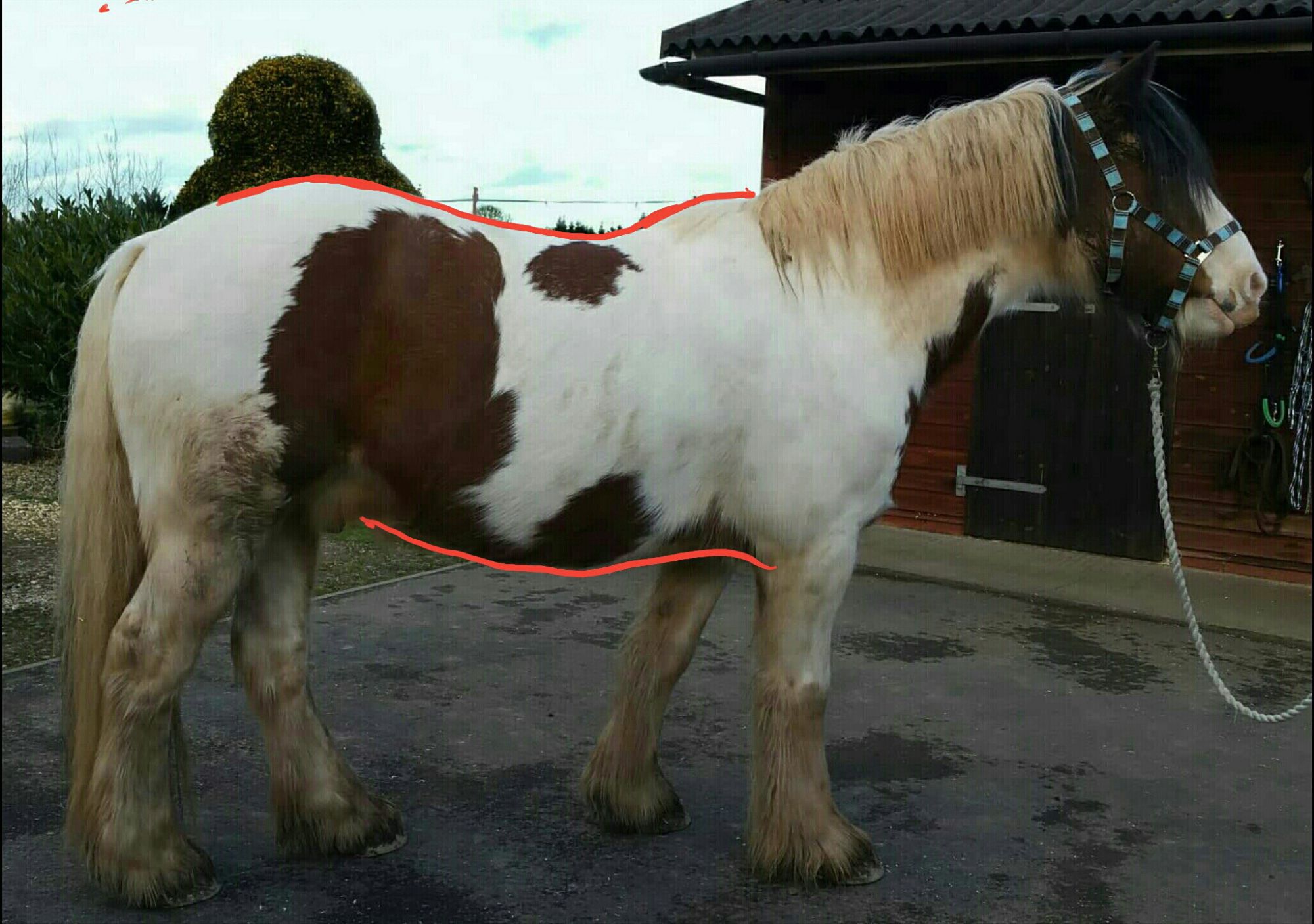
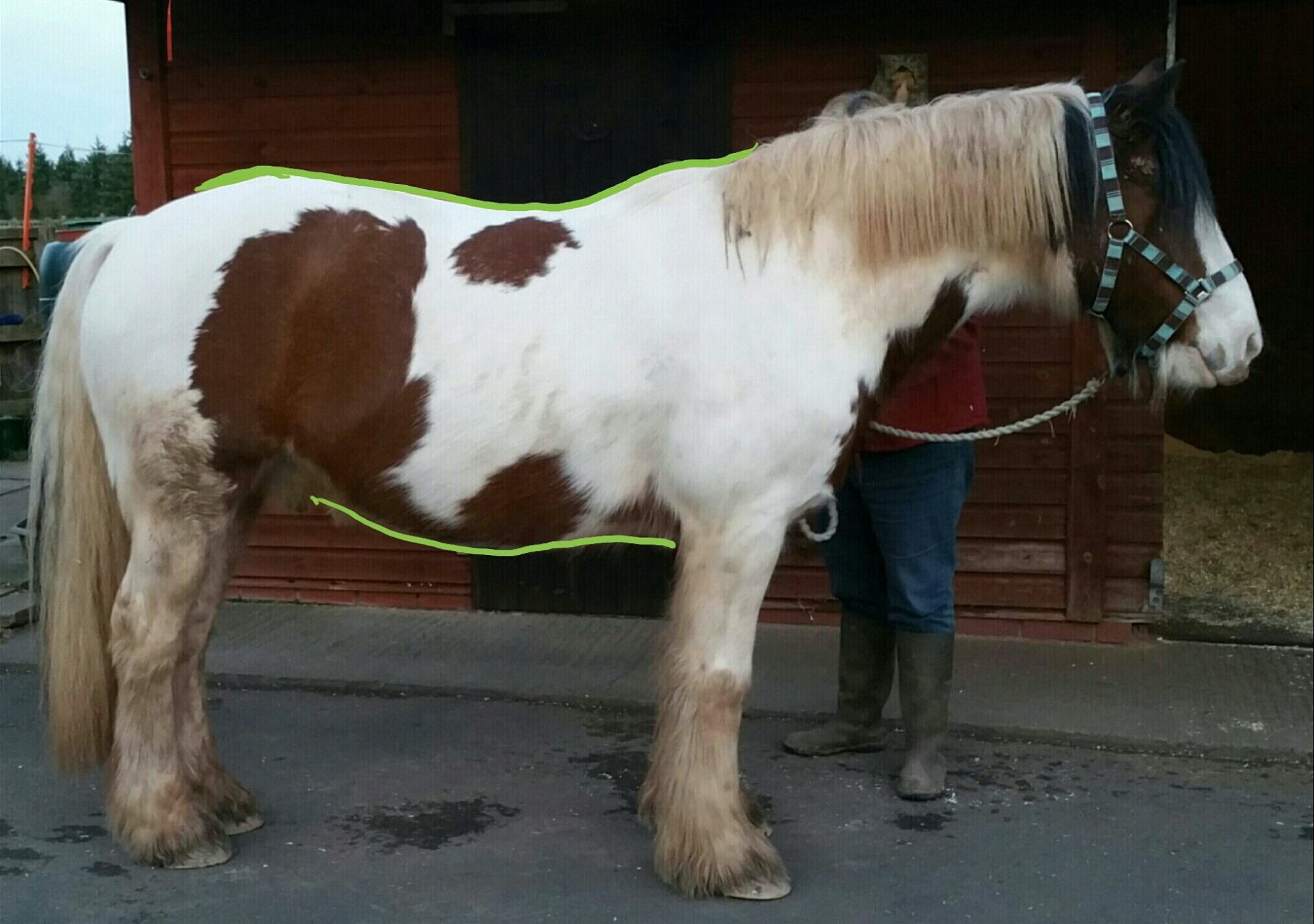
Kez RHS walking before the session
Kez RHS walking after one session
BEAR: 17hh Rescued Warmblood
Bear looked like he had been compacted by a car-crusher beforehand. He was compromised, compressed and stuck through his cranium and the whole of his body. In one session, he looks as though he has morphed from a compact pony to a longer bodied, much larger horse. Photos are taken progressively through the session.
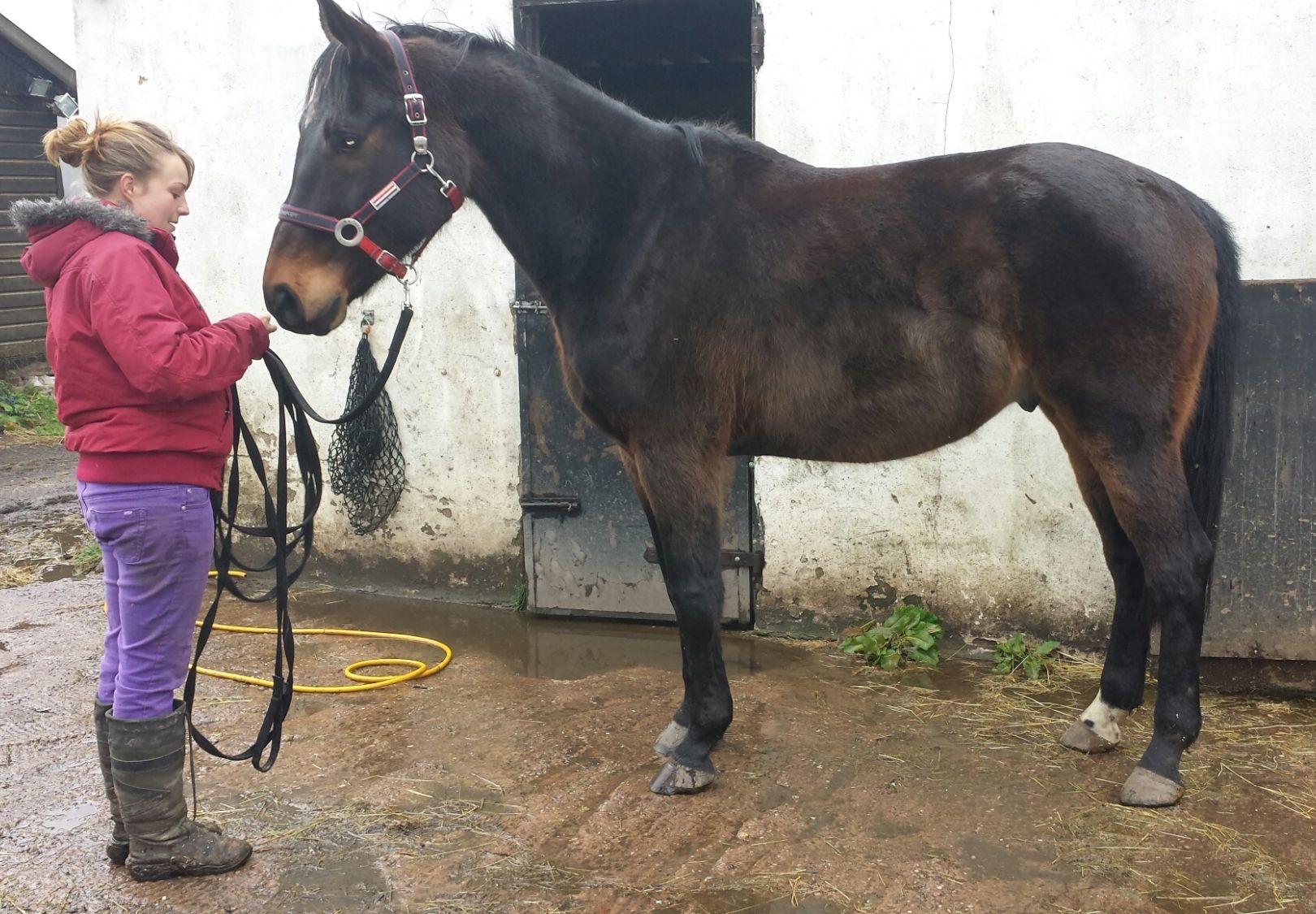
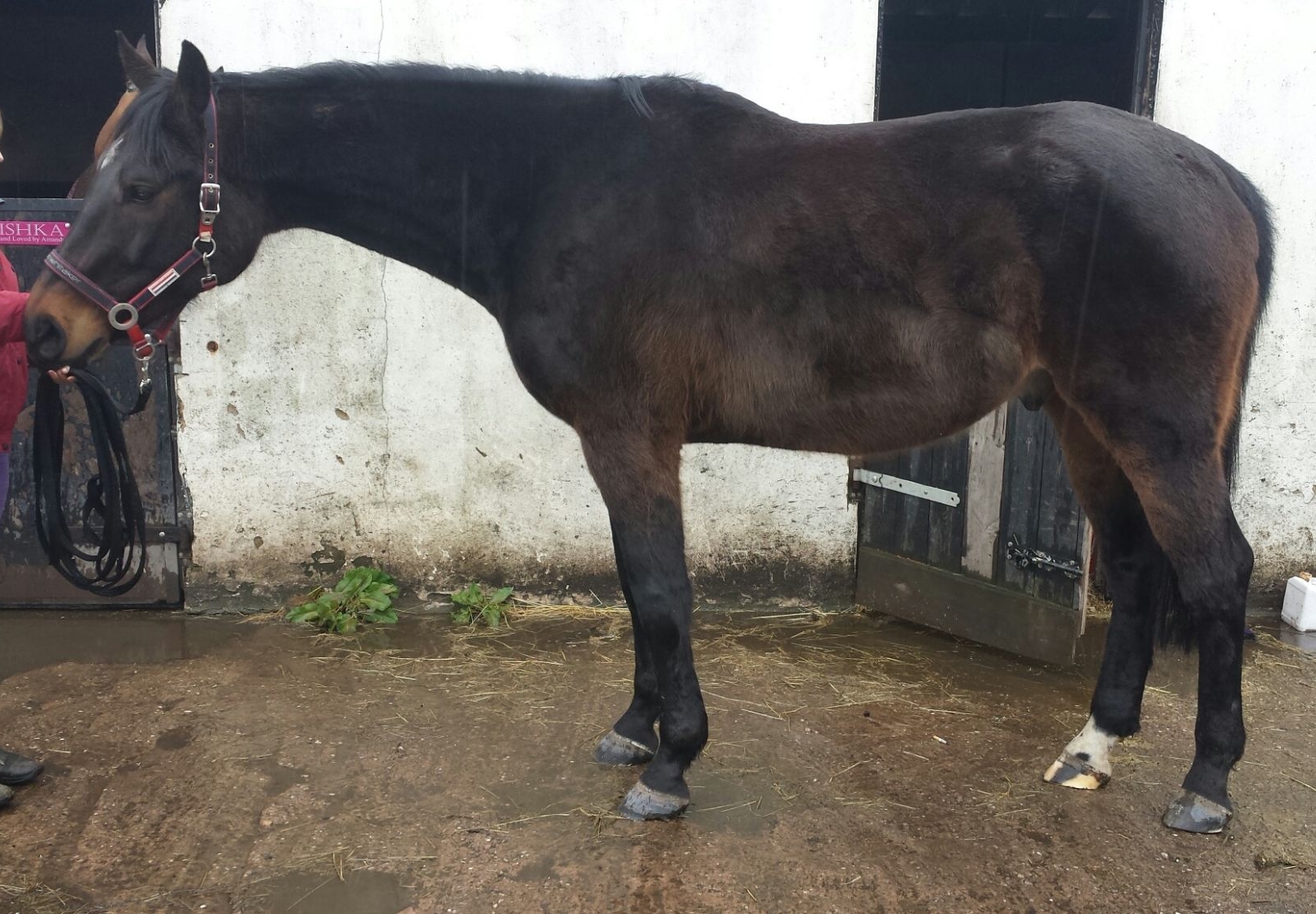
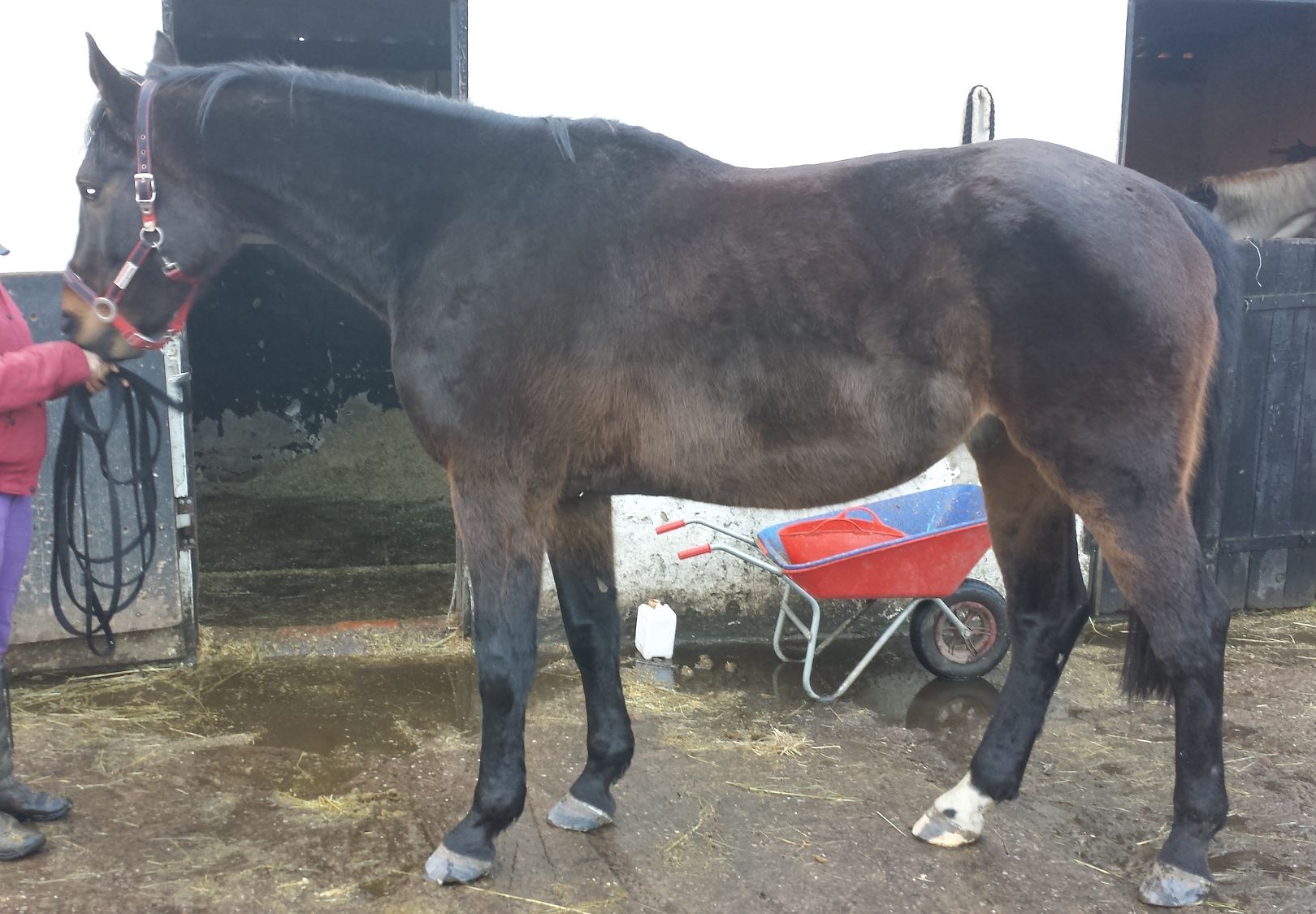
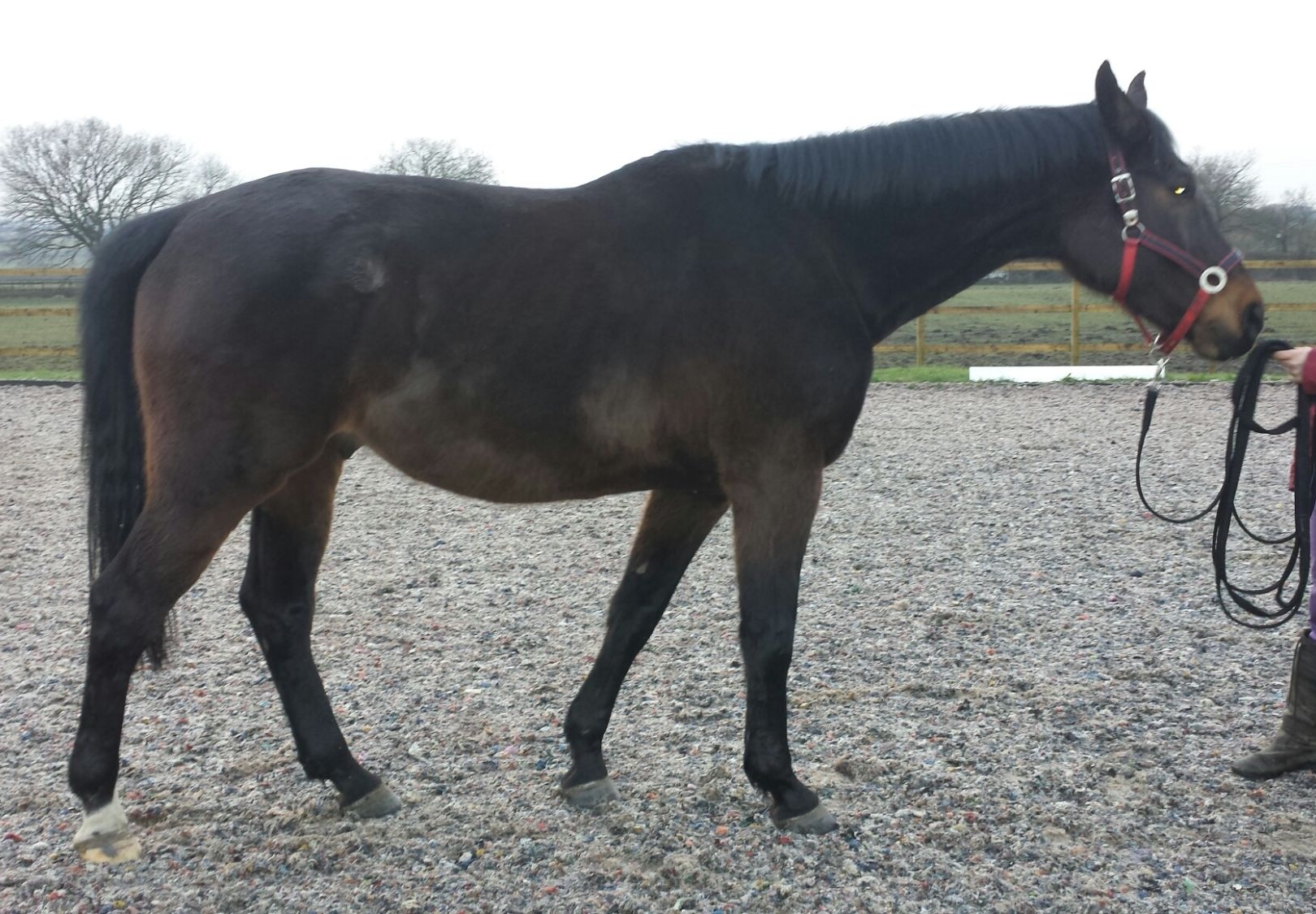
Rocky 16.3hh Irish Bred : Vet Referral
Rocky was an unbalanced 6yr old horse, that did not 'come right' after a sideways slip/fall. I was called in, during rehabilitation, after the horse had had it's hind suspensories denerved. He was currently in shoes with heel extensions. The videos , taken from behind, were taken before any removal of shoes or rebalancing of feet.
ROCKY Before First session
ROCKY After first session (still shod), moving more freely. right hind starting to track behind right fore, despite the foot balance.
ROCKY After the first session, BEFORE second session, showing that the body has maintained the new position for the intervening two weeks.
ROCKY: Front foot balance before trim, after removal of shoes....front feet seen as you would view them standing in front of the horse. BOTH feet very high on the left of the horse, and comparatively low on the right of the horse. Hinds were also in a similar balance.
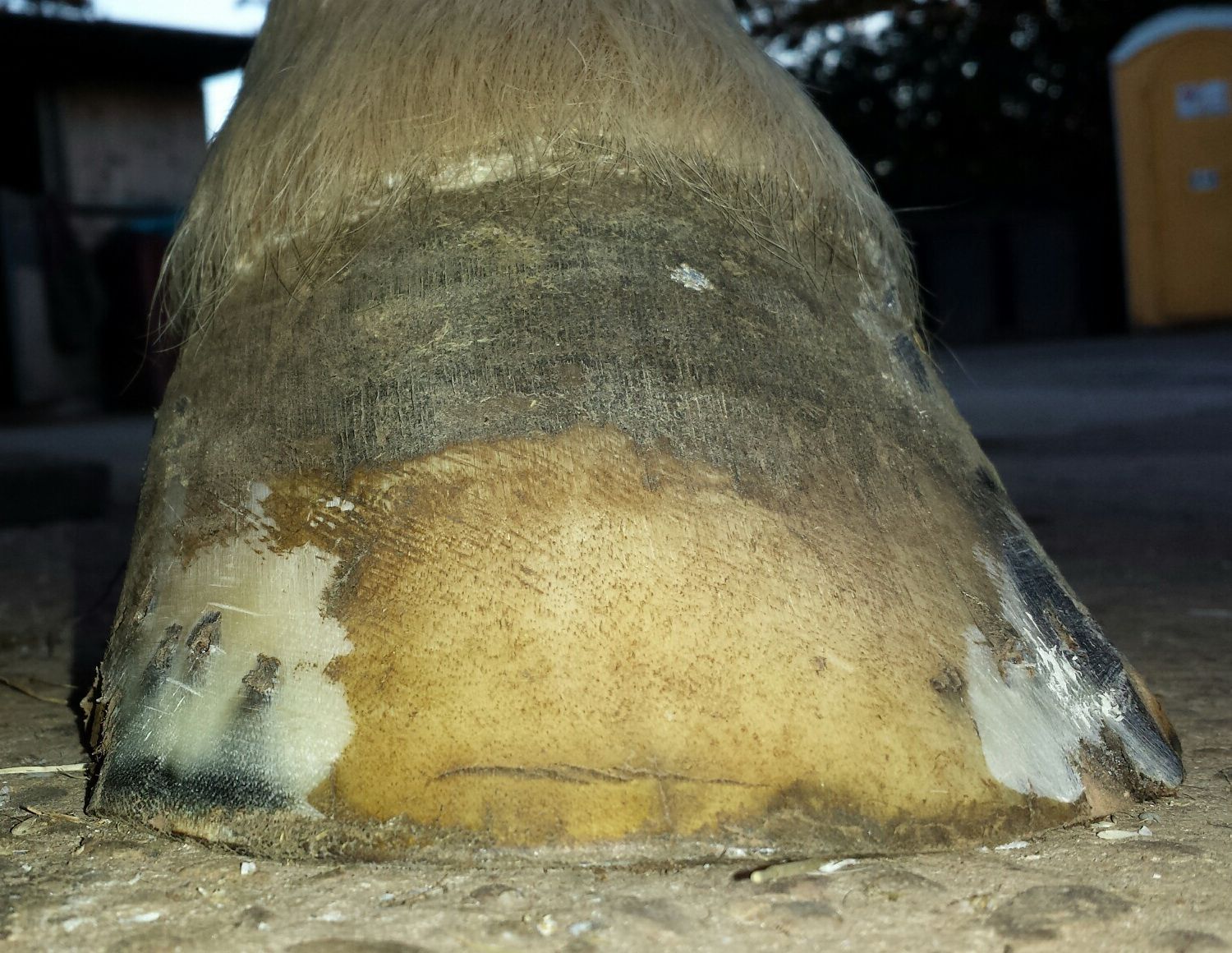
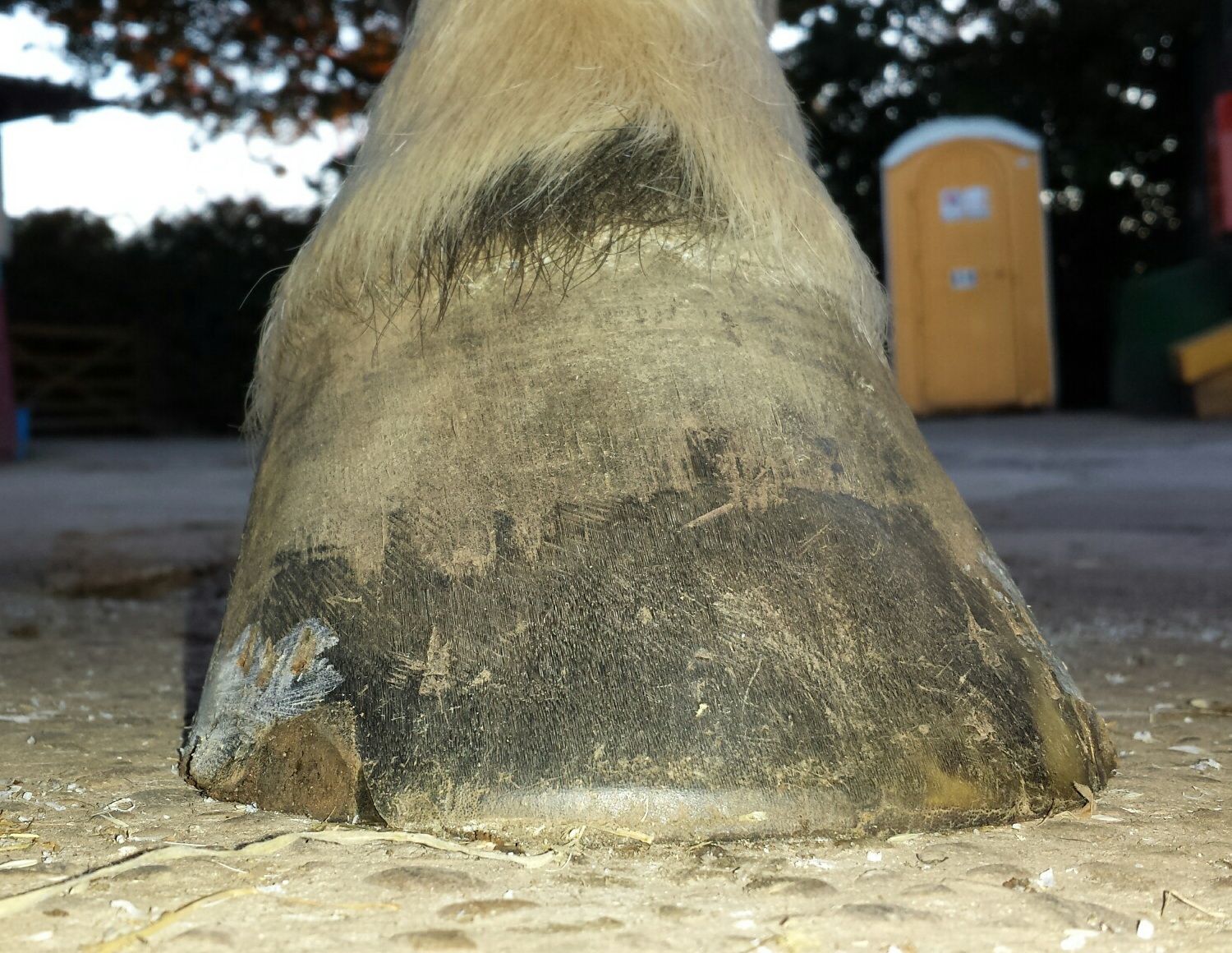
The same front feet viewed from the front after the trim.
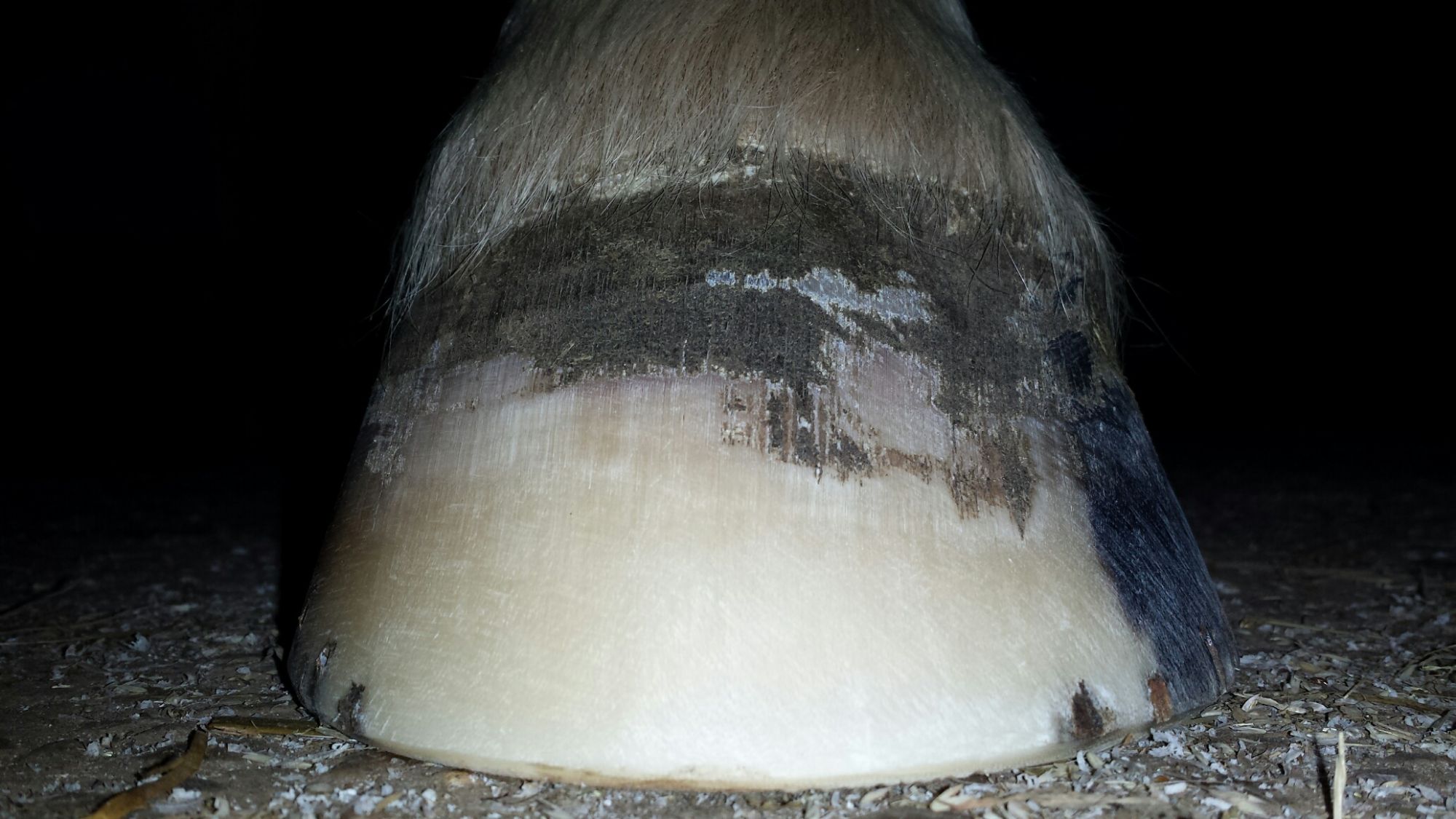
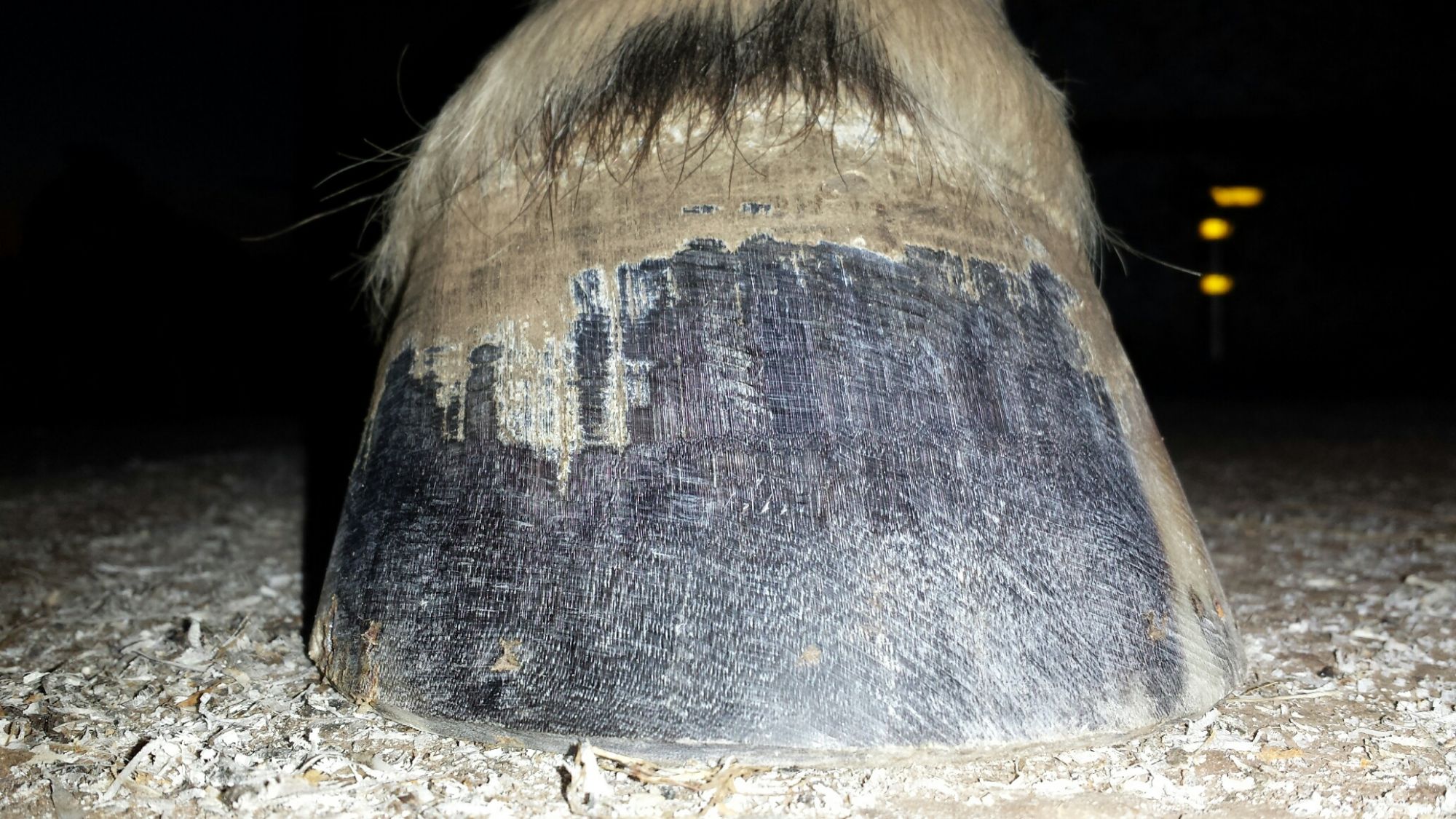
MINSTREL
13hh (Light) Mother and daughter share. The saddle definitely fits the shape of the pony's back and has been correctly professionally fitted. There is no muscle loss. However, this shows what can typically happen with short coupled horses. If you clear the shoulderblade, then the rider's weight is centered too far back for the pony to step through and lift through the lumbars. It can often manifest in a more swayed back, more strung out behind/on the forehand, and being sorer through the hocks and lumbars. It can result in reluctance or bucking when asked to go into canter. The after picture is what happened in 5 weeks when the lightweight adult, who did most of the schooling work, ditched the saddle and rode bareback in a better place on the pony's back. Sadly, it would not be possible to sit on the same place on the horse in a treed saddle without also blocking the shoulder. Alternative solutions can sometimes come from using one of a wide variety of treeless saddles WITH appropriate weight distribution pads, or a western STYLE of broader panel that is designed to flare out to allow the shoulderblade to slide underneath. What a difference in the back in only 5 weeks!
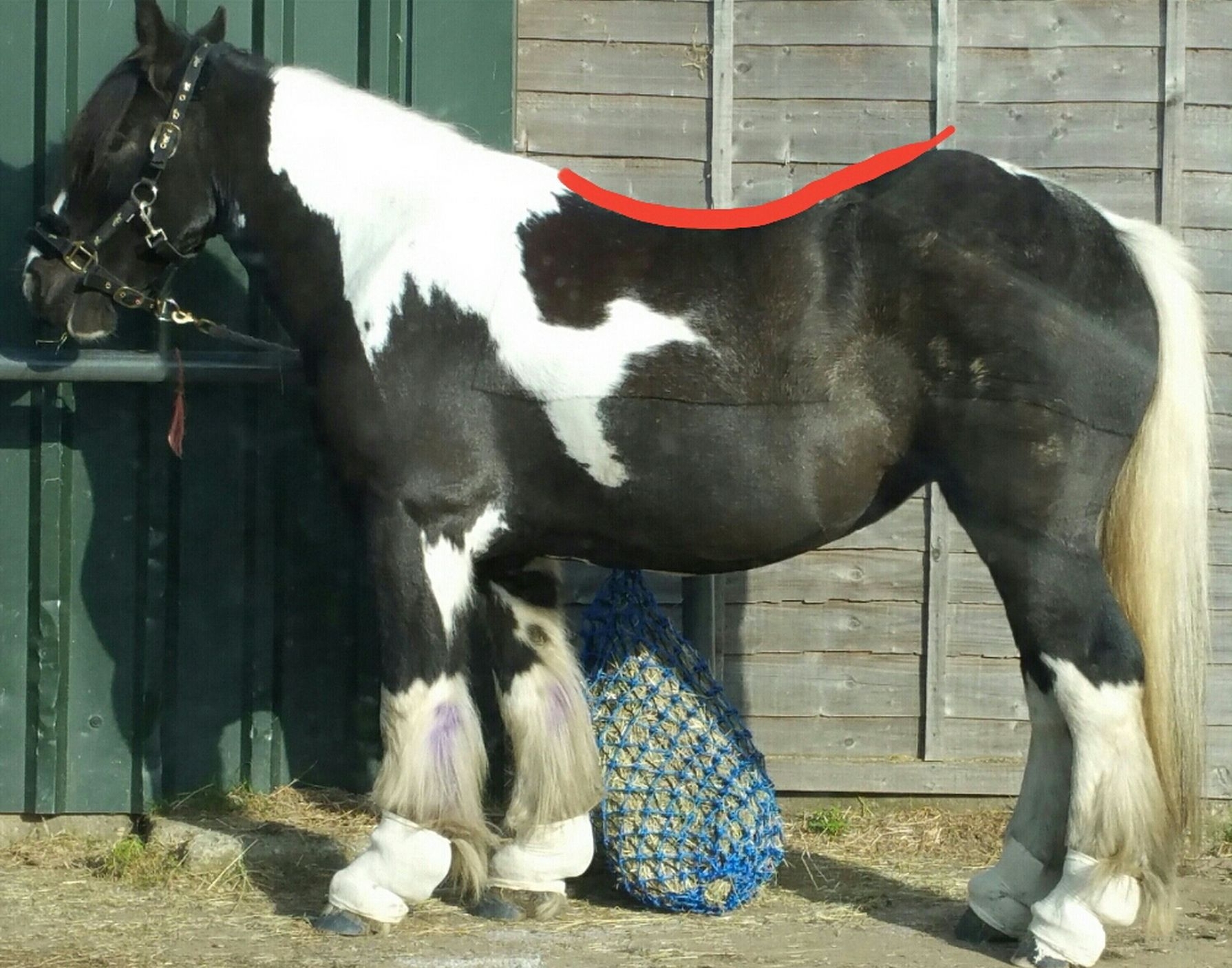
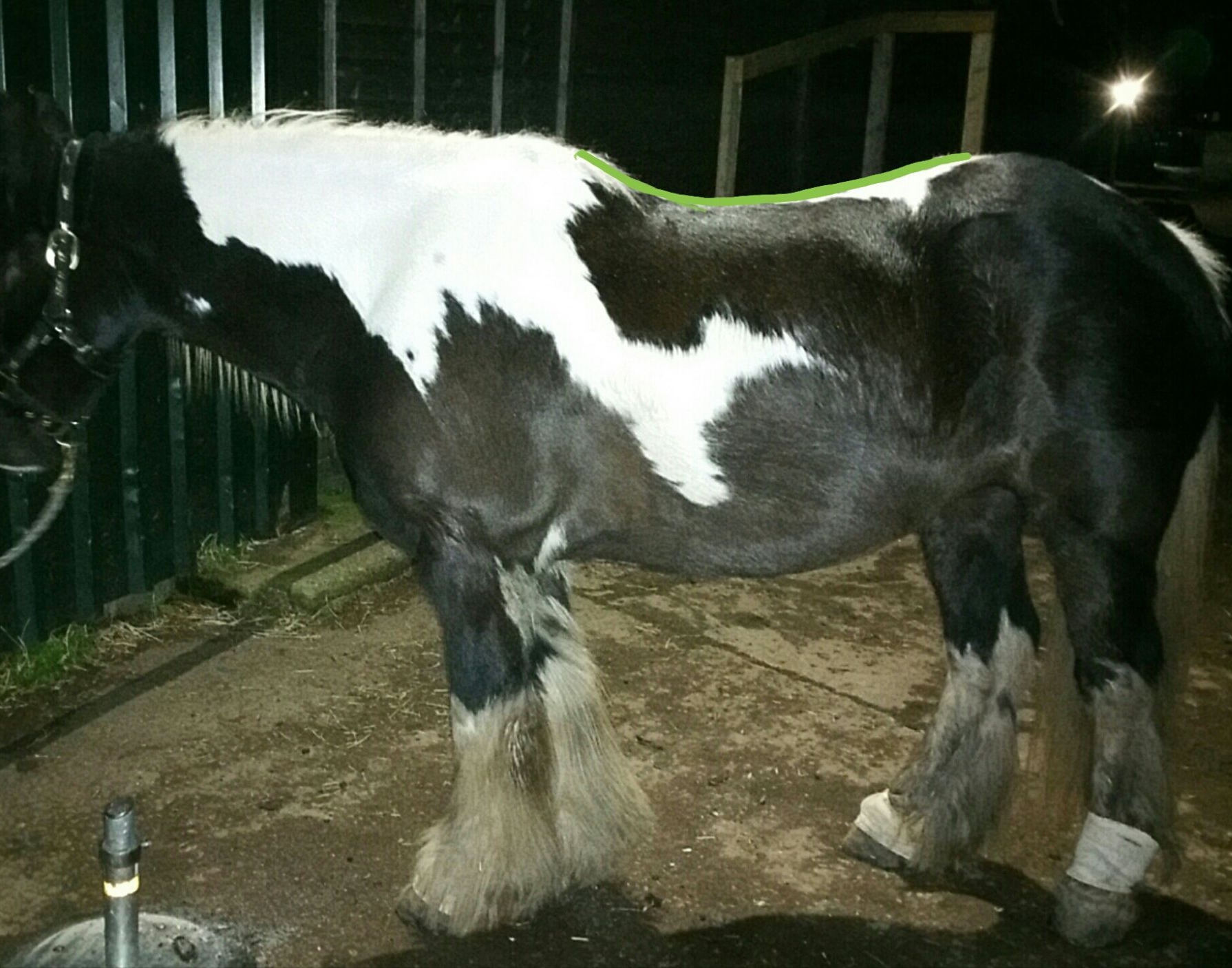
Chips and Sophie using a Christ Lammfelle Premium Plus Sheepskin Pad
Chips is a relatively short coupled 14hh dude of a pony with an adult rider. This situation quite often occurs with a family share cob. It requires diligent saddle-fitting, and is one of the hardest to get right. Because even if the saddle is exactly the same shape as the horse's back, there are more factors to take into consideration. Here, he and Sophie move beautifully in balance in a Christ Lammfelle Premium Plus Sheepskin Pad fitted with foam panels to provide more protection, and more spine clearance.
DOMINGO LA ROCA -Gaited Paso Fino
This difference was achieved in 6 weeks .... changing how he was ridden and what he was ridden in, WHERE it was placed and by listening to what HE said allowed him to move.... in this particular case, he was only able to re-learn to 'lift' using a sheepskin bareback pad (see Chips and Sophie above) as he perceived anything solid as a block. He was a really efficient gaited horse as a youngster, but arrived, no longer gaiting, because of his posture and body use. This series of photos show his return to a super gait machine.
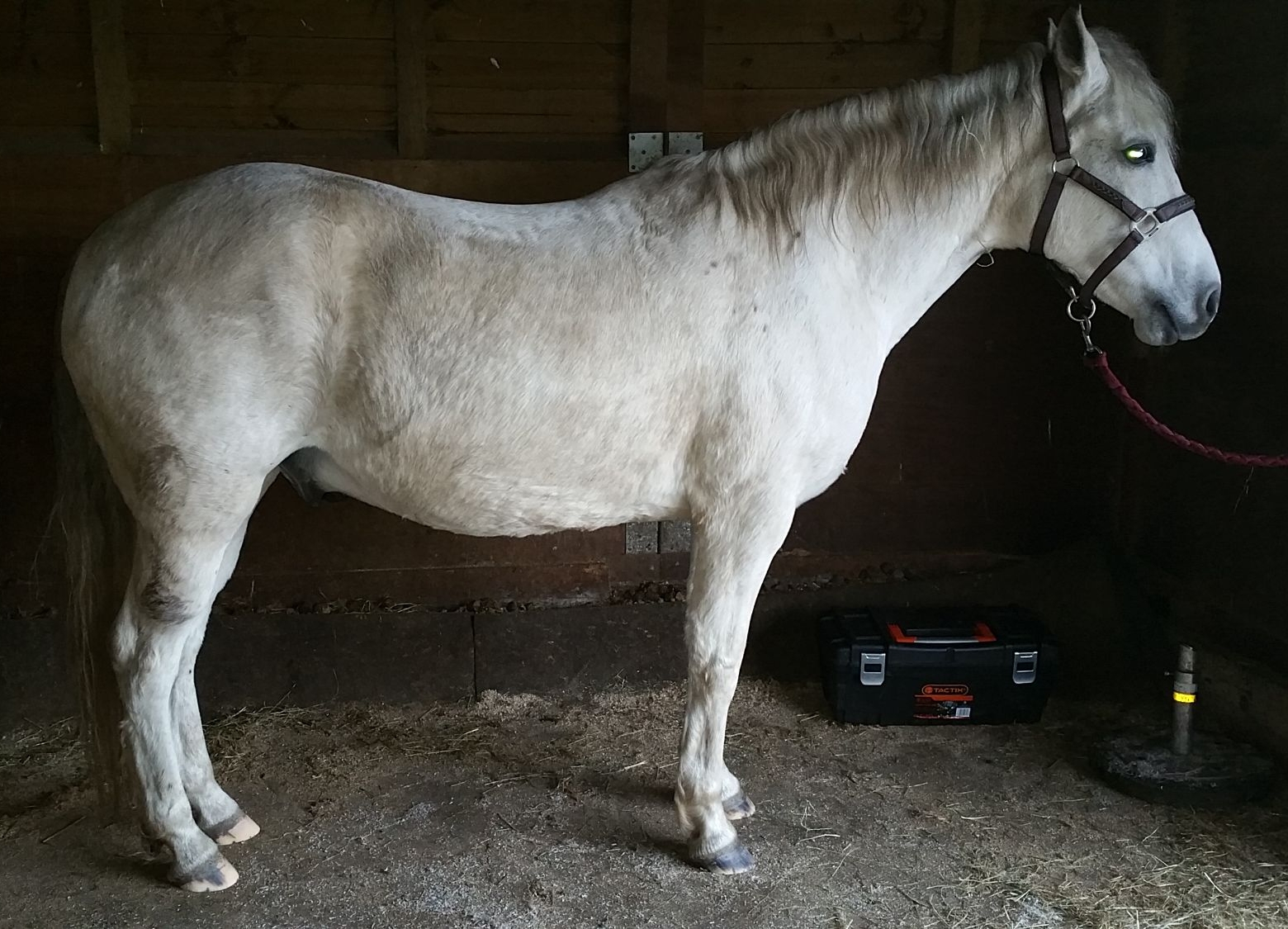
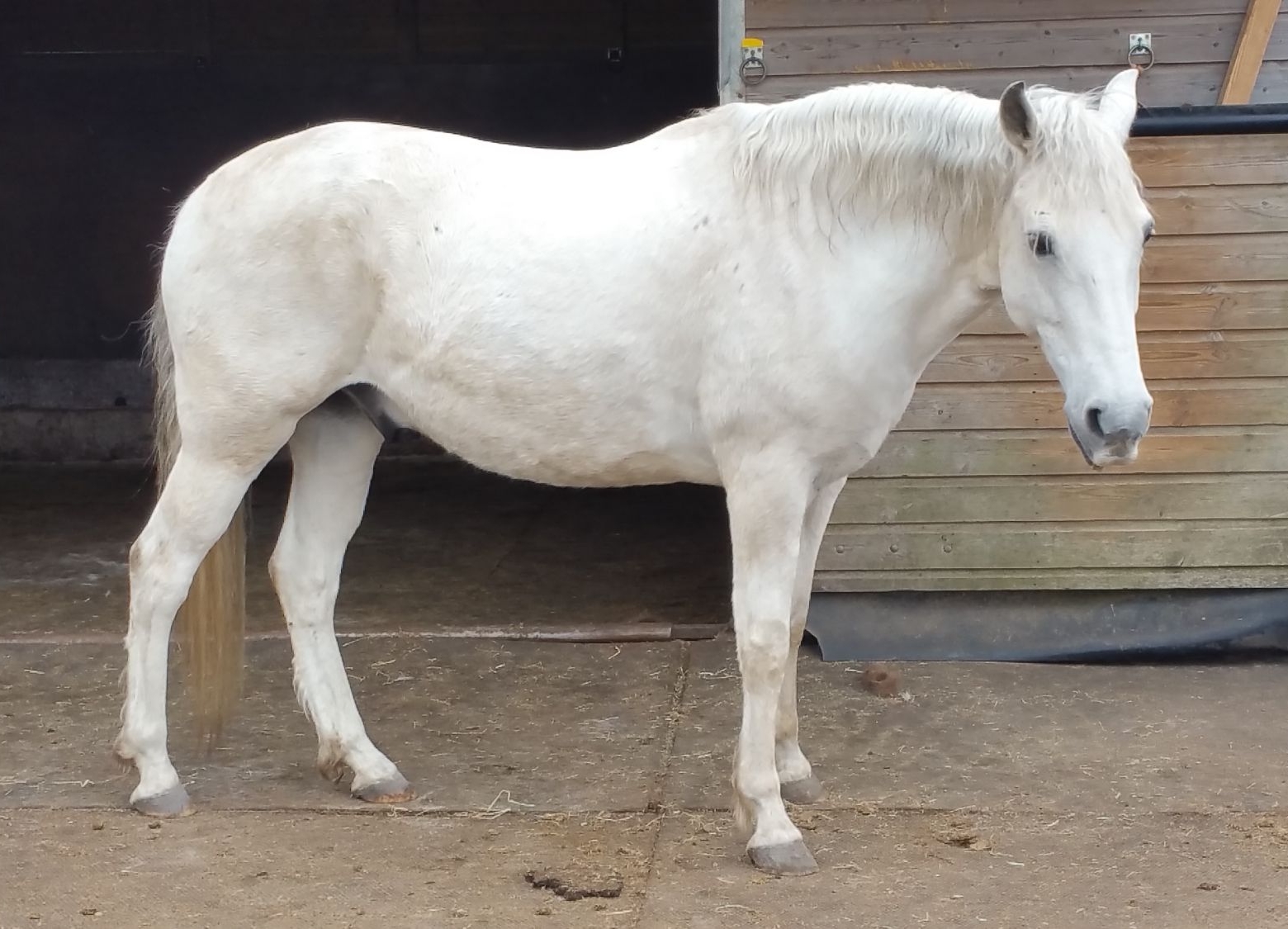
Pictured below is where HE said he needed his saddle -and why are you taking my picture?! The pad imprint clearly shows why, when you see his shoulderblade. Rider's weight is centered on their two blades, directly over the stirrup bars, at the base of the withers. He is now gaiting again very consistently. It is his preferred gait.
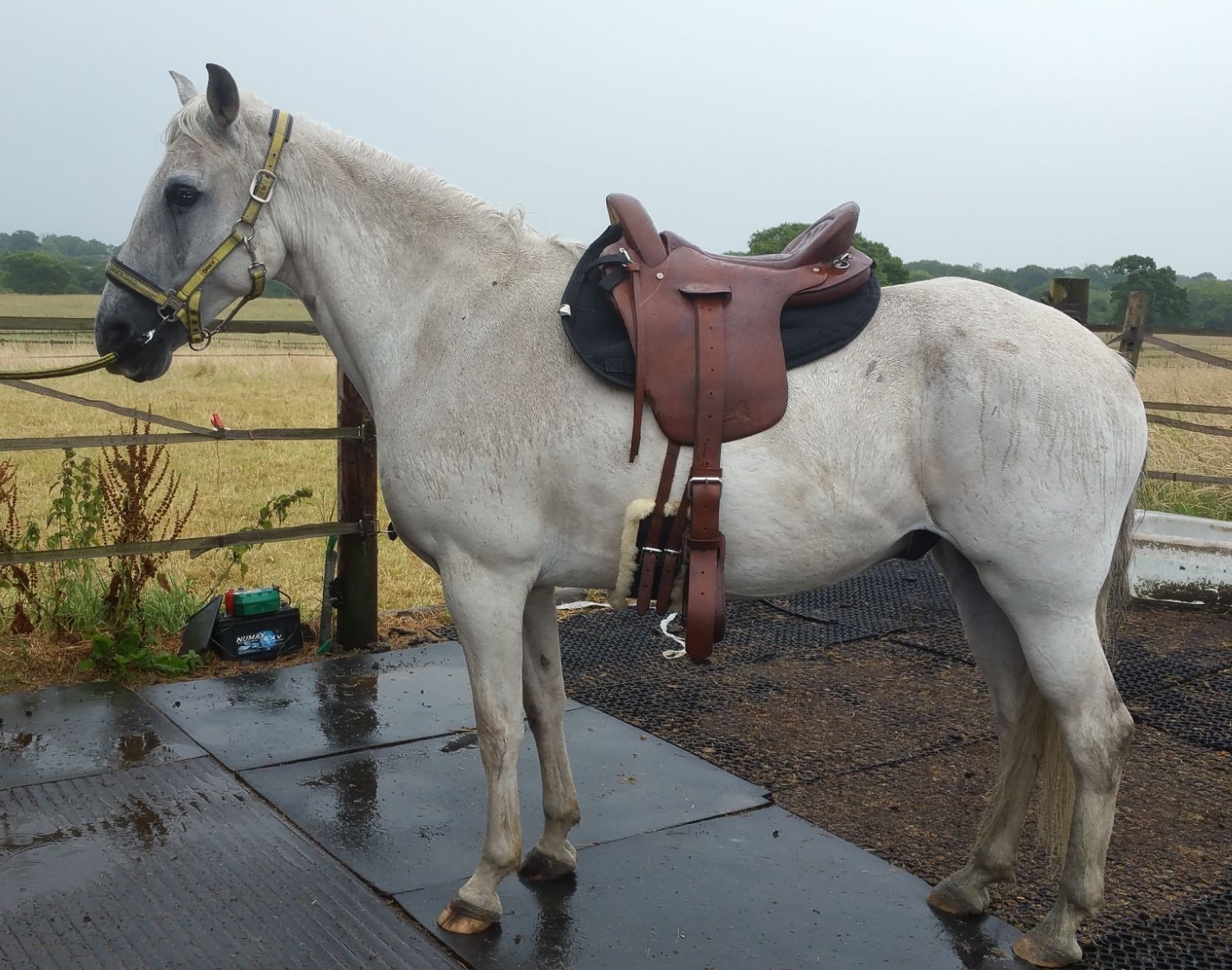
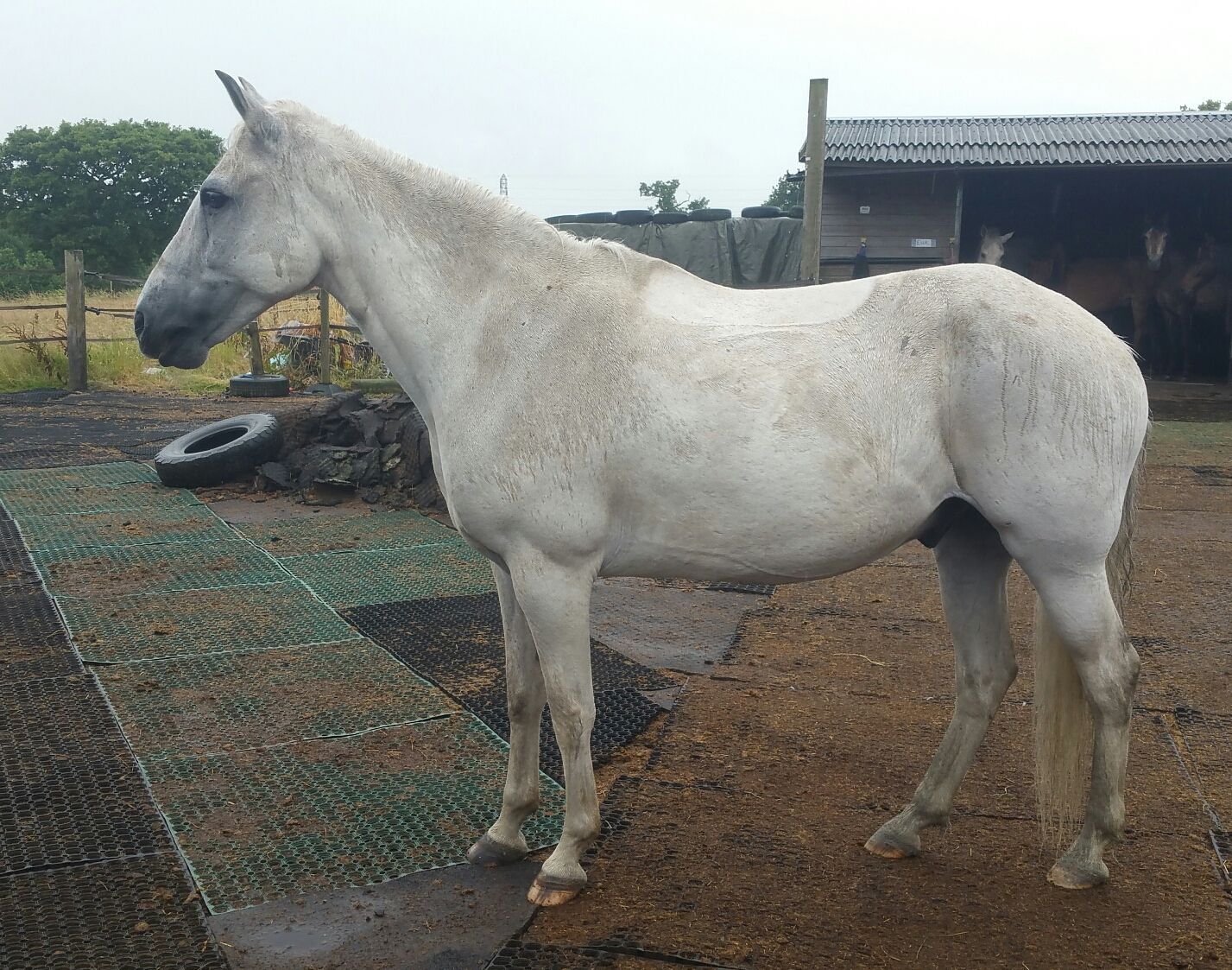
Gaiting- How do you make them do it???
More like how do you stop them!! Most gaited horses are born gaiting. Gait was part of what horses used to do before man bred it out in favour of a flashier looking trot with the advent of the carriage. It is not new, -its old! It's the same movement you can see in a smaller dog like a terrier or a Jack Russell when they look like they're moving like a millipede and you just know it's not trot! Their anatomy is very different to 'normal' horses....their point of hip is much higher up on their body, their spine and thus the rib angle is much deeper down. They may appear, to the uninitiated, to be leg movers, but their back is anything but rigid: The quadrant of muscle controlling it is greater in volume or depth, than a 'normal' horse. It is a fluid, flexible cabling system , designed to used with the intra- and supra- spinous ligaments accommodating in slack, unlike bascule. The spinous processes are longer, which means that for the same degree of spinal flexion, there is more strain on the infra- and supra-spinous ligaments, which is why their bodies are not designed to work in prolonged deeper flexion. More than one, that I know, has suffered damage to these ligaments by someone trying to work them in that way. Their neurology is set up differently....gait genes allow for independent movement of each leg, and are missing the neurological link that pairs diagonals like in trot. On top of gait genes, there are gait modulator genes: at one end of the scale we have Missouri Foxtrotters who are nearer the trottier/more diagonalised end of gait and need to work in a neutral to very slightly rounded shape; and at the other we have more lateral breeds and Hard Pacers who have the most lateral pairing of legs , who need to work on the hollow side of neutral to be correct for their anatomy and neurology. They are super smooth to ride as there is no moment of suspension....only a rolling transfer of weight in the same pattern as a walk. The best gaited horses are often compact. bigger is not better. Below is my own, GLAMUR FRA PENTLAND, a beautiful blue dun icelandic, bred by Jill Noble at PENTLAND HILLS ICELANDICS. He is being ridden by someone who had never ridden a gaited horse before, while experiencing the 'Icelandic Grin'!! :)
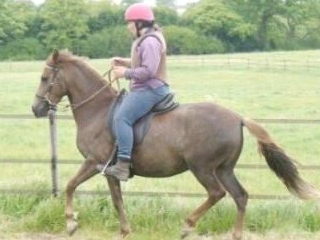
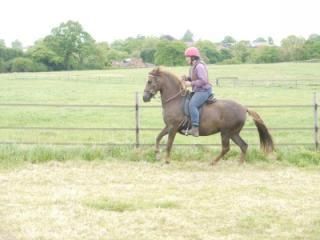
ZAKATAL : 12yr old Racehorse and BAREFOOT WINNER
Zakatal is owned by David Furman and John Sugarman who have been dedicated to him since they bought him 6 years ago. In the last two years he has had 4 wins, 6 Seconds, 1 Third, and 1 Fourth - all barefoot. He came with a crippled body, bowed tendons and shod feet whose soles gave to thumb pressure. They said that he could have whatever time it took, but they wanted to do right by him and also race him barefoot! Zakatal is a professional who certainly knows his job, but sensitive to moving away from pressure....whether that's a girth, saddle, breastplate, where a rider sits. Frequently, his owners take him home to restore him to his best form. Few racehorses have the luxury of having owners that care like this.
THE EFFECT OF WHERE A SADDLE PUTS THE RIDER
This well fitted, good quality saddle fits the horse, but slightly pitches the rider into the junction box and is asking them to sit back a little bit into the cantel to sit upright. Not by much at all. The front legs of the horse travel less back, the back is held flatter, and the hind end is less underneath the horse. The rider would prefer the horse to be able to stride out more freely.
Below is the SAME saddle, with some padding under the front that lifts the tree out of the Junction Box, taking the tree and panel out of the path of the shoulderblade. The stride is softer and longer: the front leg travels further back underneath the horse; the back is more mobile and more lifted, the hind end swings free-er and deeper underneath. I have NOT advised the rider to ride with padding jacking up the front of the saddle, but wanted to demonstrate how relieving the pressure in the junction box and allowing the rider to be in an improved balance helps the horse move better.
Out of the box....Ask the horse....
It is always good to explore alternatives and other ends of the spectrum...to find out what happens. If you haven't tried something, you just don't know whether there may be something even better for you both. I am NOT an advocate of ANY particular saddle ..... only of whatever is best for a particular horse (and rider). You never know what your horse might say. Sometimes it's about spring; sometimes it's about stability; sometimes it's about a rider needing to feeling secure (and how that may affect the horse). Shouting louder when the horse feels restricted is NEVER the answer (and was NOT the case for this pair)......there's always a reason for what happens.
TEX: Un-started Welsh Section D, 4 Year Old
Tex was showing lots of head tossing during liberty and groundwork. He was stuck through the cranium and neck (probably as a result of playing lots of 'boys games'!). Now, more free and elegant through the neck, and better balanced. Better Focused. Beautiful boy!
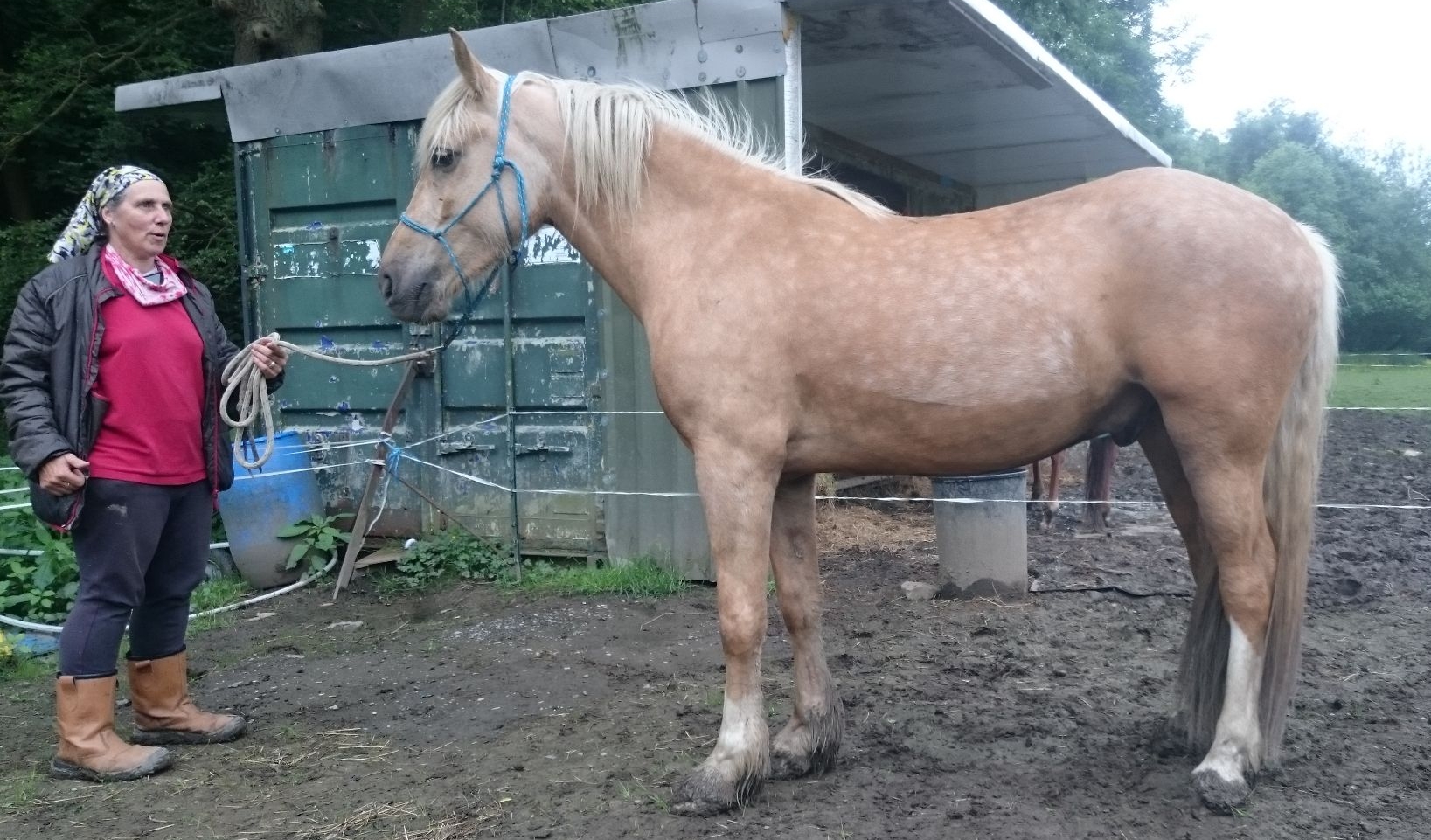
This lovely mare was one of the first horses I worked on in my training. Before receiving cranial work she was reluctant to give or leave a hind foot for picking out. Afterwards, she was happy to stand, balanced and comfortable and leave her foot with you.
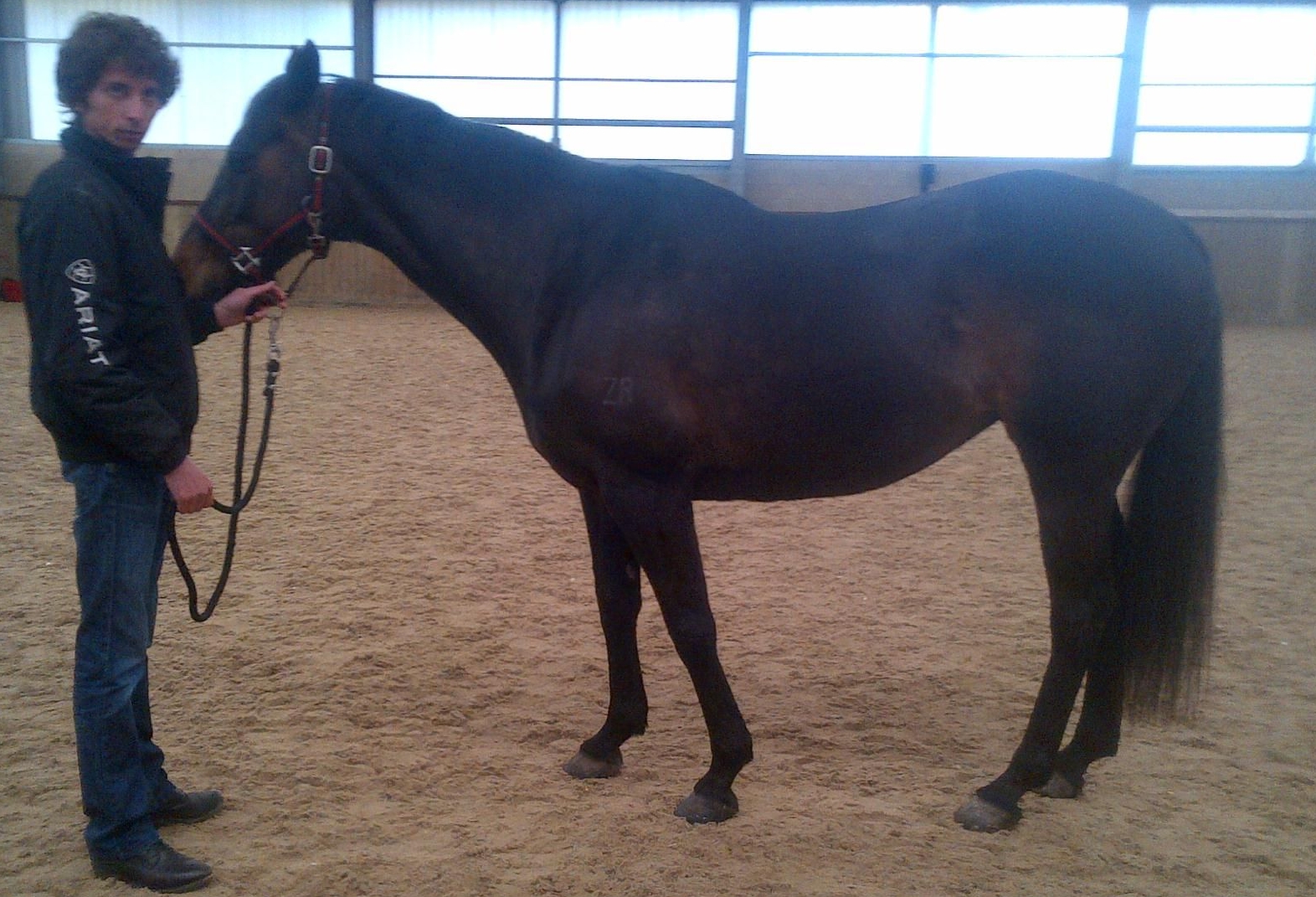
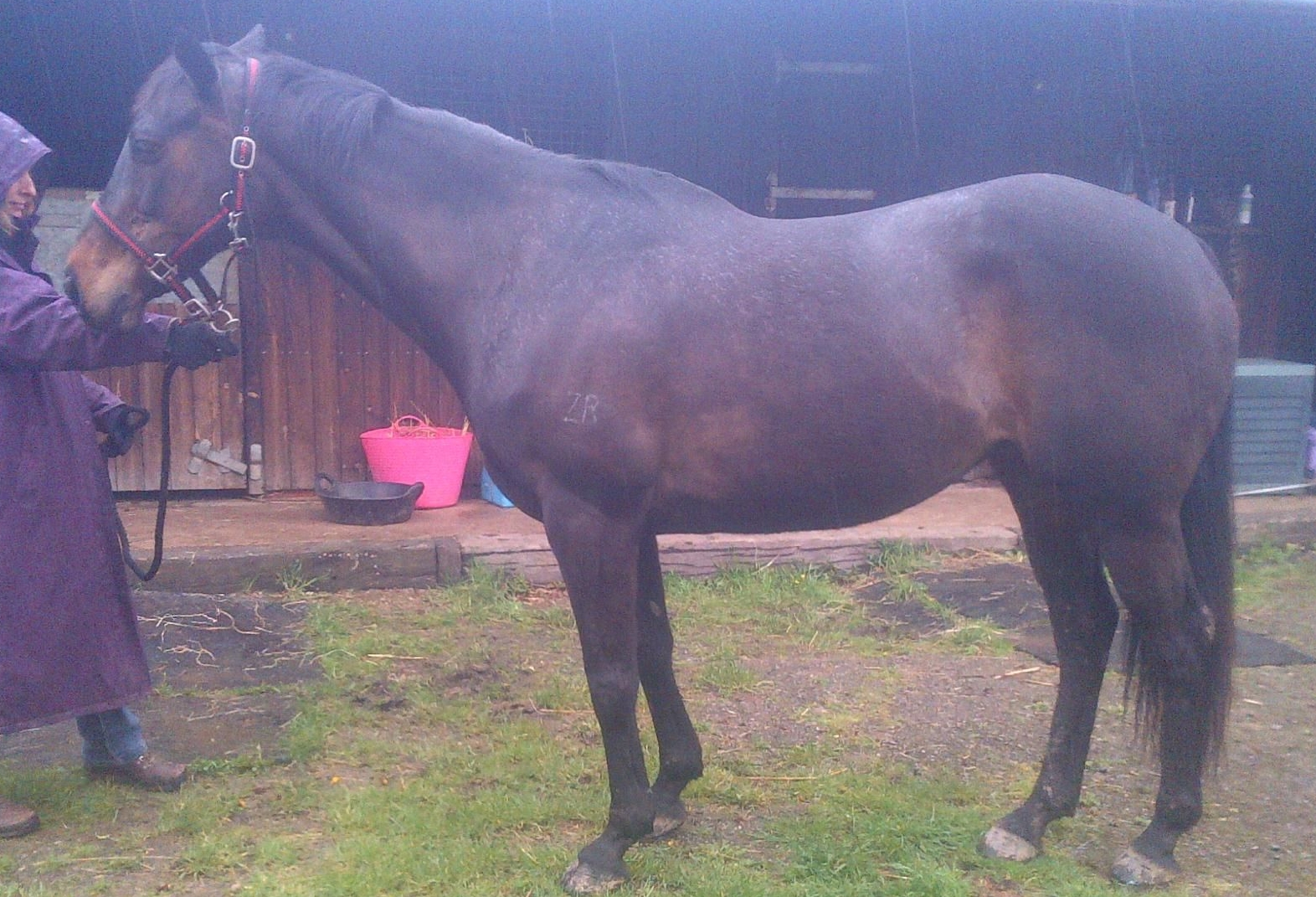

Back to HOMEPAGE : FLUID MOVEMENTS EQUINE : FOR RIDERS & TRAINERS : EQUINE CRANIOSACRAL THERAPY
Fiona VARIAN
Tel: 0779645 7715
Email: [email protected]